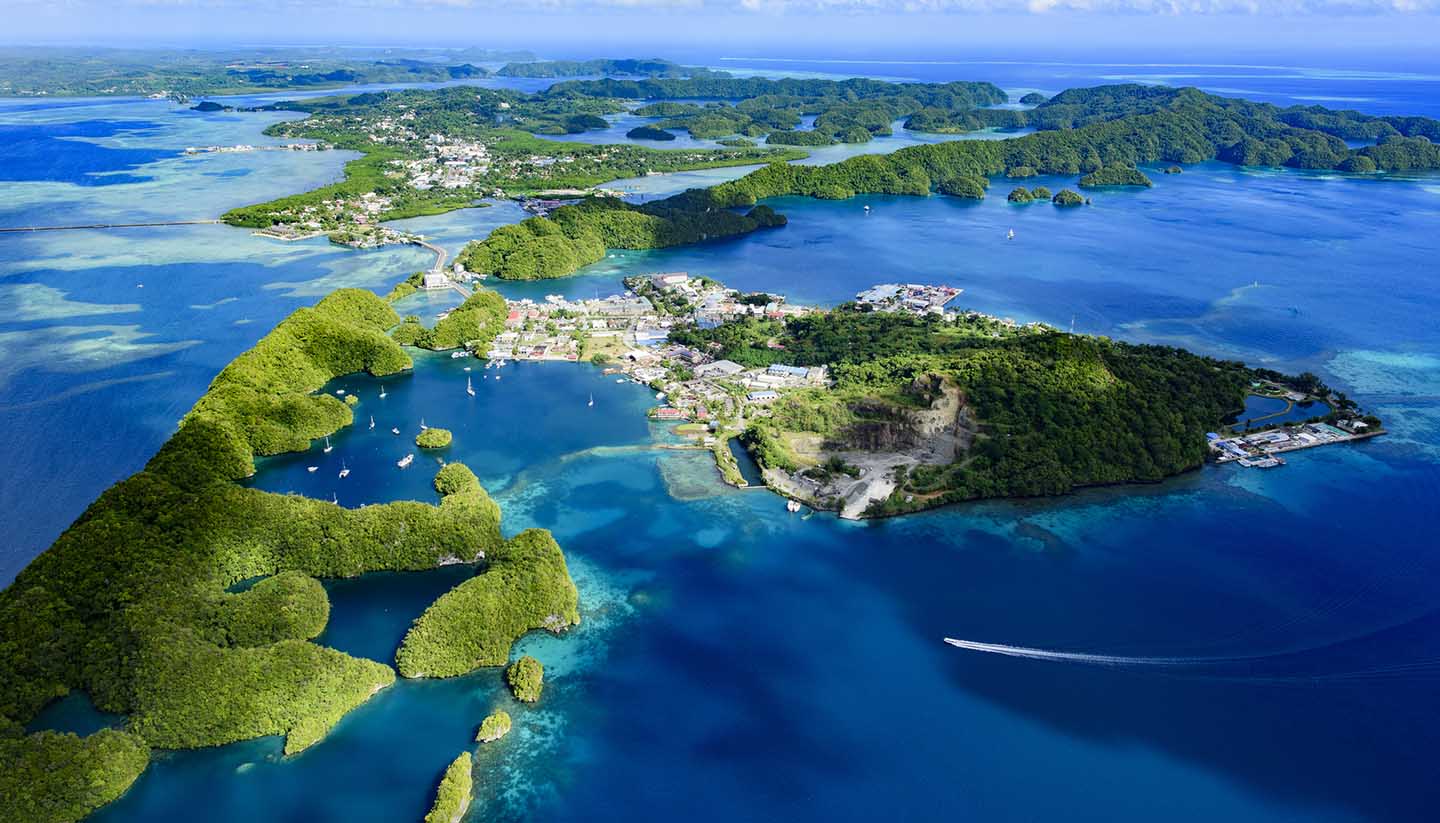Pacific Islands Of Micronesia: Doing business and staying in touch
Doing Business in Pacific Islands Of Micronesia
Lightweight suits or shirt and tie are usually worn. Appointments should be made and calling cards are exchanged. The best time to visit is May to October.
Office Hours
Mon-Fri 0800-1700.
Government office hours: Mon-Fri 0800-1200 and 1300-1700. There may be some local variations.
Economy
In all four territories, subsistence agriculture is a key employer. Copra, coconuts, cassava and sweet potatoes are the major crops: yields are sufficient in some cases to sustain export markets. Fishing is similarly important. The Marshalls and Palau have developed small-scale light industries engaged in food-processing, boat-building and the like.
Service economies based on tourism and financial services have generally proved difficult to establish owing to the remoteness of the territories and the lack of infrastructure. Micronesia, Palau and the Northern Marianas have gone furthest in their efforts to overcome these obstacles. In particular, the establishment of an air link with Japan gave a major boost to tourism in the Northern Marianas but the lack of available workers led to the recruitment of large numbers of foreign workers (which accounts for the huge growth in the islands' population).
The region as a whole continues to rely heavily on foreign aid, mostly from the USA, from which it will receive millions of dollars in annual aid until 2023 when Trust Fund will eventually provide the islands with annual payments in perpetuity.
The Marshall Islands also has an offshore financial services industry. However, in 2002 the Marshall Islands were one of seven countries 'named and shamed' for their failure to tackle the issue of money-laundering.
As members of the Pacific Islands Forum, the islands have agreed to participate in a free trade zone, known as PICTA (Pacific Island Countries Trade Agreement), set up in 2002. Supporters of the Agreement contend that it will bring much-needed trade to the region; critics maintain that the islands are being run over by the globalisation bandwagon and small, fragile economies are being forced to open up before they are ready.
GDP
Palau: US$144.7 million (2005); Marshall Islands: US$144 million (2005); Northern Mariana Islands: US$633.4 million (2000): Federated States of Micronesia: US$232 million (2005).
Main exports
Palau: fish and handicrafts; Marshall Islands: copra cake, coconut oil, handicrafts and fish; Northern Mariana Islands: garments; Federated States of Micronesia: fish, garments, banana, kava and betel nut.
Main imports
Palau: fuel, food and beverages, and manufactured goods; Marshall Islands: food, consumer goods, machinery and petroleum products; Northern Mariana Islands: food, construction equipment and materials, petroleum products; Federated States of Micronesia: food and manufactured goods.
Main trading partners
Palau: USA, Japan, Singapore and Korea (Rep); Marshall Islands: USA, Japan, Australia and New Zealand; Northern Mariana Islands: USA and Japan; Federated States of Micronesia: Japan, USA, Hong Kong and Guam.
Keeping in Touch in Pacific Islands Of Micronesia
Telephone
Variable – there are international satellite links on the Marshall islands; there are payphones in Saipan and most hotels, restaurants and other public facilities have telephones which visitors can use in the Northern Marianas Islands while phonecards are available and calls can be made from most hotels in Koror, Palau.
Internet
There is basic access and services on the islands.
Post
Airmail to Europe takes approximately 10 days. Post offices are located in the centre of each state.
Post Office hoursPalau: Mon-Fri 0800-1600, Sat 0900 to 1000; Marshall Islands: Mon-Fri 1000-1530, Sat 0900-1545; Northern Mariana Islands: Mon-Fri 0900-1600, Sat 0900-1200; Federated States of Micronesia: Mon-Fri 0830-1630. Closed on the weekends.


